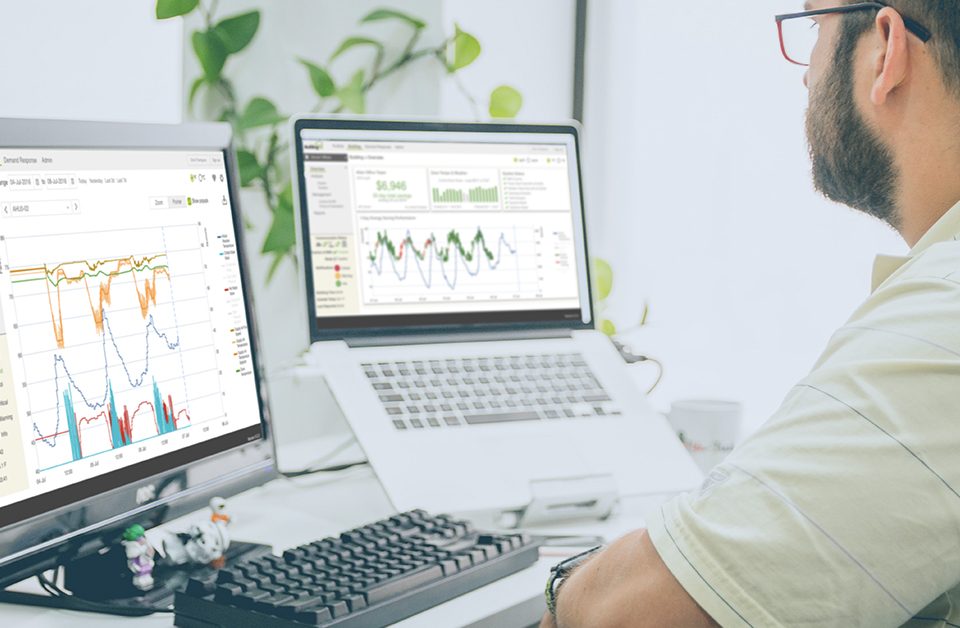
Blog

Energy IS My Divining Rod
April 25, 2017
A Moving Target: The Human Factor In Optimizing Comfort
June 29, 2017It has been a pretty intensive travel year for me so far. I’ve been presenting at numerous industry events, from NFMT Baltimore to the IoT Evolution Conference & Expo in south Florida. The great benefit of these opportunities, besides getting the chance to educate the market on topics relevant to our 5i platform, is the ability to gain feedback and understanding on the various pain points from audience attendees. In particular, there has been a tremendous amount of interest in the Internet of Things (IoT). It seems that there is still a struggle within the industry to conceptualize how the IoT should be defined and when it should be used within the built environment.
What exactly is IoT?
When most people think of the IoT, it’s usually in the form of a smart piece of luggage that can never get lost since you are tracking it on your phone, it’s a toothbrush that logs the duration of how long you’ve brushed your teeth or it’s a food bowl for your pets that you can control from anywhere. This is IoT in its most basic, limited form. Within the building space, the interest seems to be keying off the traditional notion of what automation systems do for a building. The IoT is being viewed as a way to feed information to a BMS and a way for it to control different devices within the building. However, it is this limited view that is holding the industry back, as the IoT should be really viewed as a way to add intelligence into a building, not just as a way to control what is already there.
The BMS – Center of the Universe
The role of the BMS is changing —this has been a common thread in industry discussions lately. Data needs to be streamed into the cloud via the BMS to properly analyze and add intelligence to an environment. The onsite computing that a BMS provides is simply too limited to capitalize on the full potential of the IoT. Pushing information to the cloud, where advanced analytics and modeling can be conducted, will unlock better data-driven decisions, such as how to adjust for optimal lighting based on human traffic and where to shift air pressure in order to move more oxygen to the location of occupants. The brains of a building are moved to the cloud, which sends commands to the BMS, which in turn becomes the muscle to make changes within the facility.
When the concept of moving control to a cloud-based platform —through a technology such as our 5i intelligent energy management services— is presented, the question that comes back is often: do customers accept the idea of a cloud-controlled BMS? What would appear to be a yes or no answer is not that simple.
Inertia
Introducing new technology is often accompanied by a bit of reservation by the user at the thought of giving up control of certain tasks. While the source of the reservations vary greatly —from distrust to fear to practice as usual— overcoming them really comes down to the fact that you’ve got to prove that it works. We do this with our 3rd-party endorsed Measurement & Verification (M&V) capabilities, which comply with the International Performance Measurement & Verification Protocol (IPMVP). The past is compared to the present and the impact the platform is providing is showcased. While users may be hesitant at first to give access and control of the BMS to our platform, they are eased as the results are presented.
Although the IoT has been thoroughly embraced throughout many other industries, adoption has been extremely slow within the built environment since we’re dealing with virtual systems controlling physical equipment that in turn impact people directly. There is definitely some truth in the notion that every building is a snowflake, and it is the job of the facilities or building teams to make sure that whatever systems are deployed, the impact on tenants, operations, and energy are all positive.
In the end, it will require education, trust, and good experiences to overcome some of the adoption hurdles that are in place. To a degree, that’s what we’ve been trying to do, one tradeshow and speaking session at a time.

Steve Nguyen is VP of Product and Marketing at BuildingIQ. He loves products and ideas that transform markets or society. Whether they are transformative in and of themselves, or because they are enablers, he’s driven by creating the stories, teams, and strategy that make these agents successful.



